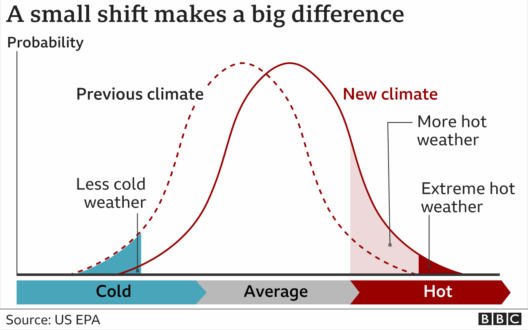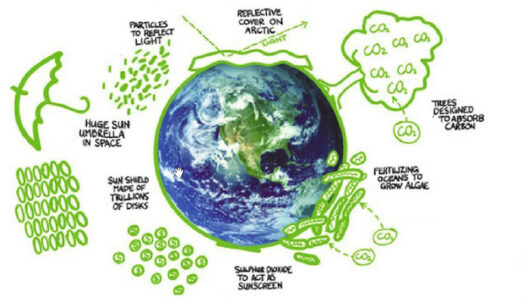The relationship between the solar cycle and global warming is a captivating subject that has sparked considerable discussion among scientists and environmental enthusiasts alike. At the heart of this inquiry lies a fundamental question: does the cyclical nature of solar energy output contribute to the long-term warming of our planet? To adequately address this query, it is essential to dissect the nuances of solar activity, its fluctuations, and the myriad ways these influences interact with Earth’s climate system.
The solar cycle, typically spanning approximately 11 years, is characterized by the oscillation of solar radiation due to changes in solar magnetic activity. This phenomenon manifests through sunspots, solar flares, and variations in solar irradiance. During the peak phase of the cycle, known as solar maximum, the Sun emits more energy—an increase in solar irradiance, which can, theoretically, have repercussions for Earth’s climate. Conversely, during the solar minimum, the Sun’s output diminishes, leading to possible cooling effects. However, while this cycle indeed impacts short-term climate variability, it is crucial to contextualize its role relative to the long-term climate alterations precipitated by anthropogenic factors.
In examining the historical correlation between solar activity and Earth’s climate, researchers have analyzed data that span centuries. The Medieval Warm Period (approximately 950–1250 AD) and the Little Ice Age (about 1300–1850 AD) are notable points of reference. During the Medieval Warm Period, higher solar activity coincided with warmer temperatures in Europe, while the subsequent Little Ice Age was punctuated by reduced solar output. This historical perspective illustrates that variations in solar irradiance have affected climate patterns; nonetheless, attributing contemporary global warming exclusively to solar cycles is an oversimplification.
Modern climate science unequivocally underscores that the predominant driver of recent climate change is anthropogenic greenhouse gas emissions. Since the onset of the Industrial Revolution in the late 18th century, human activities—such as burning fossil fuels, deforestation, and industrial processes—have released substantial quantities of carbon dioxide (CO2) and other greenhouse gases into the atmosphere. These emissions create an enhanced greenhouse effect, trapping heat and leading to a rise in global temperatures. While solar cycles indeed contribute to natural climate variability, their current influence pales in comparison to the profound effects of human-induced changes in atmospheric composition.
Moreover, climate models that isolate solar activity from other factors consistently demonstrate that the observed warming trends over the past century cannot be explained solely by variations in solar output. The Intergovernmental Panel on Climate Change (IPCC) confirms that the contributions of solar cycles to recent global warming are minimal, accounting for a fraction of a degree compared to the significant warming attributed to greenhouse gas emissions. Research indicates that, during the 20th century, solar output increased, yet temperatures rose even more significantly due to human influence.
Delving deeper into the solar cycle’s complexities, a critical aspect deserving exploration is the interaction between solar activity and terrestrial climate systems. The Sun’s magnetic field and solar wind can influence cosmic ray intensity, which is thought to impact cloud formation on Earth. Some theorists posit that variations in cloud cover may amplify or mitigate terrestrial warming effects. However, these interactions are highly complex and not entirely understood, leaving ample room for ongoing research.
In considering whether the solar cycle influences global warming, it is imperative to address the common misconceptions surrounding this topic. The allure of solar cycles presents a captivating narrative, often leading some to advocate for solar variability as a key player in contemporary climate phenomena. Yet, fostering such beliefs could detract from the urgency of addressing the pressing realities of climate change driven primarily by human activities. The romanticization of solar influences risks overshadowing the critical need for robust policy changes directed at reducing greenhouse gas emissions.
Furthermore, the solar cycle’s inherent periodicity fosters a sense of intrigue within the scientific community and the public alike. People have a natural tendency to seek cyclical patterns in nature, as these patterns lend a semblance of predictability to an otherwise chaotic world. This fascination unearths broader philosophical questions about humanity’s connection to the cosmos, yet it is crucial to ground these inquiries within scientifically supported frameworks. While the solar cycle undoubtedly presents a fascinating subject of study, the existential threat posed by anthropogenic climate change necessitates a focused response rooted in empirical data.
In conclusion, while solar cycles undeniably play a role in influencing Earth’s climate, their current impact on global warming is overshadowed by the more dominant forces elicited by human activity. Understanding the complexities of solar activity, its historical precedence, and the nuances of climate interactions fosters a more comprehensive grasp of Earth’s climate system. As the global community grapples with the serious implications of climate change, it is imperative to prioritize informed discourse that emphasizes the need for concerted action against human-induced environmental degradation. Ultimately, the real influences on our warming planet demand our immediate attention, lest the allure of celestial explanations distract us from the urgent responsibility we hold towards preserving a sustainable future for generations to come.





